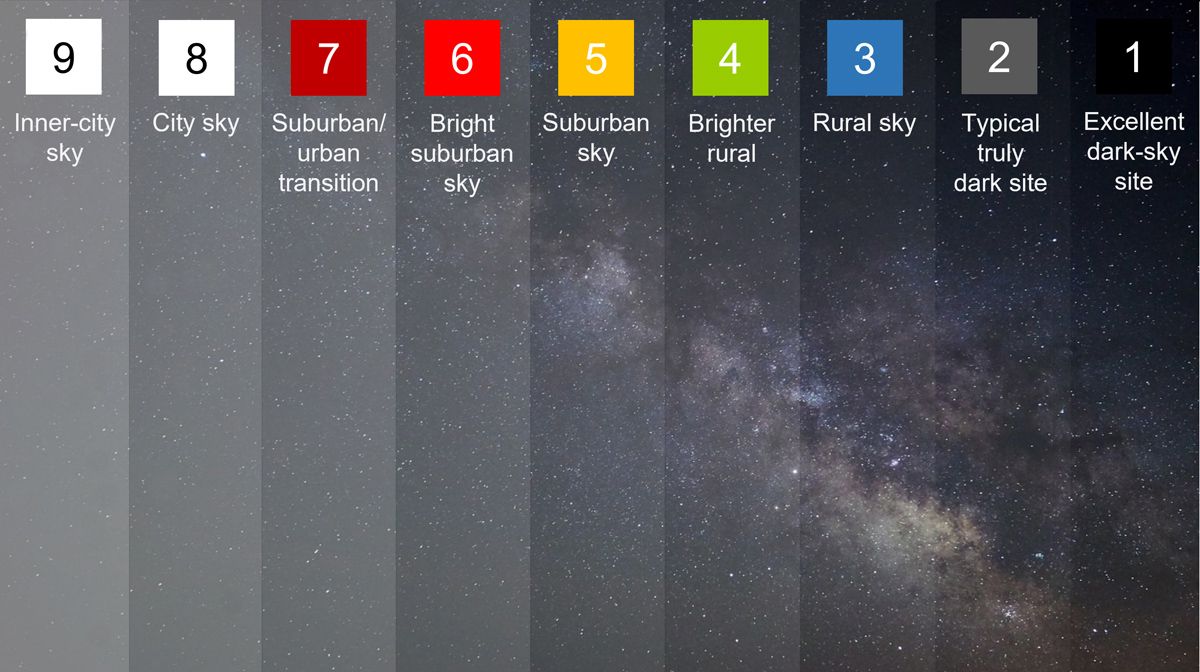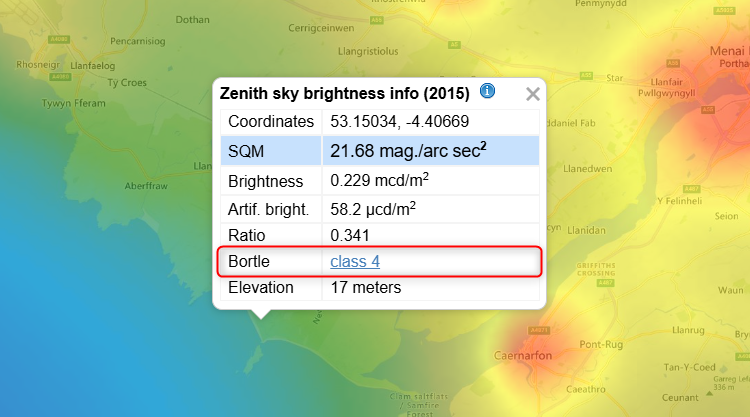As someone who lives near the city, light pollution limits what I see when I look up at night. However, that doesn’t mean I can’t appreciate the night sky at all. In this guide, I’ll show you some features to look out for in light-polluted skies and share tips for improving your stargazing experience.
What Is Light Pollution?
It’s a well-known fact that countryside skies away from the glow of light from large towns and cities give us the best chance of appreciating the intricate display plastered above our heads at night. Light pollution becomes a problem for stargazers when large amounts of light from streetlights, vehicles, billboards, and other objects are cast upwards into our atmosphere, reducing the contrast between the dark sky and the bright objects it hosts.
Each object in the sky has an absolute magnitude—how bright it really is—and an apparent magnitude—how bright it appears to us on Earth. An object’s apparent magnitude is determined by its closeness to Earth and its luminosity, and it is measured by its brightness compared to Vega, the brightest star in the Lyra constellation. The higher the number, the dimmer the object appears.
|
Object |
Apparent Magnitude |
|---|---|
|
The Sun |
-26.7 |
|
The Moon |
-12.6 |
|
Venus |
-4.7 |
|
Mars |
-2.9 |
|
Vega |
0 |
|
Ganymede |
4.6 |
|
Neptune |
7.7 |
|
Pluto |
13.8 |
In the heaviest light-polluted skies, the faintest objects you can expect to see with the naked eye have an apparent magnitude of around 3.5, while in dark skies, it’s possible to see objects with an apparent magnitude of up to 6.5.
One of the scales for measuring the darkness of the sky in a given location is the Bortle scale, where 9 is an inner-city sky and 1 is the darkest of rural skies.
To see where your location sits on this scale, select a position on Light Pollution Map and see the info card that appears.
Another source of light pollution that will hamper your stargazing success is the Moon. The sky is at its darkest during a new Moon or, at a push, when the Moon is at one of its two crescent phases.
What Astronomical Phenomena Can You See Near City Lights?
Aside from the Moon (-12.6), there are some objects that are easily visible at night, even where light pollution is at its worst. Venus’ closeness to Earth and reflective, cloudy atmosphere makes it the brightest planet (-4.7) from Earth’s perspective, while Mars and Jupiter (both -2.9) are also observable from most locations, especially during the winter months.
Meteor showers also present a good opportunity to enjoy the night sky. More specifically, the Perseid (peaking at the end of July and into August) and Orionid (peaking on October 21) showers are particularly well-known for their bright and long-lasting meteors. That said, if you’re patient enough, there are meteor showers ongoing all year round that city stargazers can appreciate.
Moving away from our immediate surroundings, unbelievably, some deep-space objects are so bright that they’re observable with the naked eye from light-polluted regions. Look out for M42 (4.0), also known as Orion Nebula, a vast cloud of dust and gas in the Orion constellation where stars are being made. If you live on the outskirts of a city, you can see the Pleiades (1.6), an open cluster of six bright blue stars. I often find the Pleiades easier to see when you don’t look at it directly.
Nighttime viewing in the city isn’t limited to the brightest astronomical objects. Sometimes reaching magnitudes of up to -5 or -6, the International Space Station—a crewed science laboratory that orbits Earth—is an object I look out for and see all the time. The sunlight reflects from its solar panels to Earth during dawn and dusk, and NASA’s Spot the Station web page tells you where and when you can see it pass overhead.
Finding Dark Spots in the City
Even if you’re significantly hampered by human-generated light pollution, there are still some steps you can take to reduce its impact.
First, if you can, ascend a tall building or sit at the top of a hill. In other words, the more altitude you can gain, the less light-polluted atmosphere there is between your eyes and space. This will also help you to reduce the amount of natural turbulence that comes with the Earth’s atmosphere (also known as transparency), and you’ll also benefit from a wider view at elevated positions.
Second, cast your gaze away from the city center. For example, if you live on the western fringes of Sacramento, you’ll see a much darker sky if you look towards the Pacific than if you try to see celestial objects to the east.
Finally, position yourself away from direct lights. Indeed, our pupils constrict to reduce the amount of bright light entering the eye, and this will make seeing astronomical objects much more difficult. I’ve been known to hang a towel on the washing line in my back garden to stop the nearby streetlights shining directly on me. While my neighbors might think I’m crazy, it’s worth taking those extra measures to improve your chances of a good night of stargazing.
Using Tech to Aid Your Stargazing Experience
If you’re using a telescope to observe the night sky, you can add light pollution reduction (LPR) filters that counteract the light emitted by traditional sodium and mercury vapor streetlights. By blocking specific wavelengths of artificial light, they allow only the wavelengths coming from the celestial objects to enter the lens, making those objects clearer to see in light-polluted areas.
If you’re using a DSLR camera to capture the night sky, you’re probably going to use long-exposure photographs to allow in as much light as possible from the object you’re photographing. However, this long exposure will also emphasize any artificial light entering your camera’s lens, making it harder to capture stars and deep-space objects. Again, adding an LPR to your camera will significantly reduce the impact of this light pollution.
In the absence of any filters, stargazing through binoculars helps reduce the adverse effects of light pollution by focusing on a more concentrated region of the sky, thus minimizing the volume of scattered light entering your eyes. Aim to use binoculars with larger aperture lenses to further improve your stargazing experience.
Regardless of whether you’re in a location with low or high light pollution, there are many steps you can take to have more stargazing success, like using the right equipment, learning the sky map, and understanding the motion of the sky.






